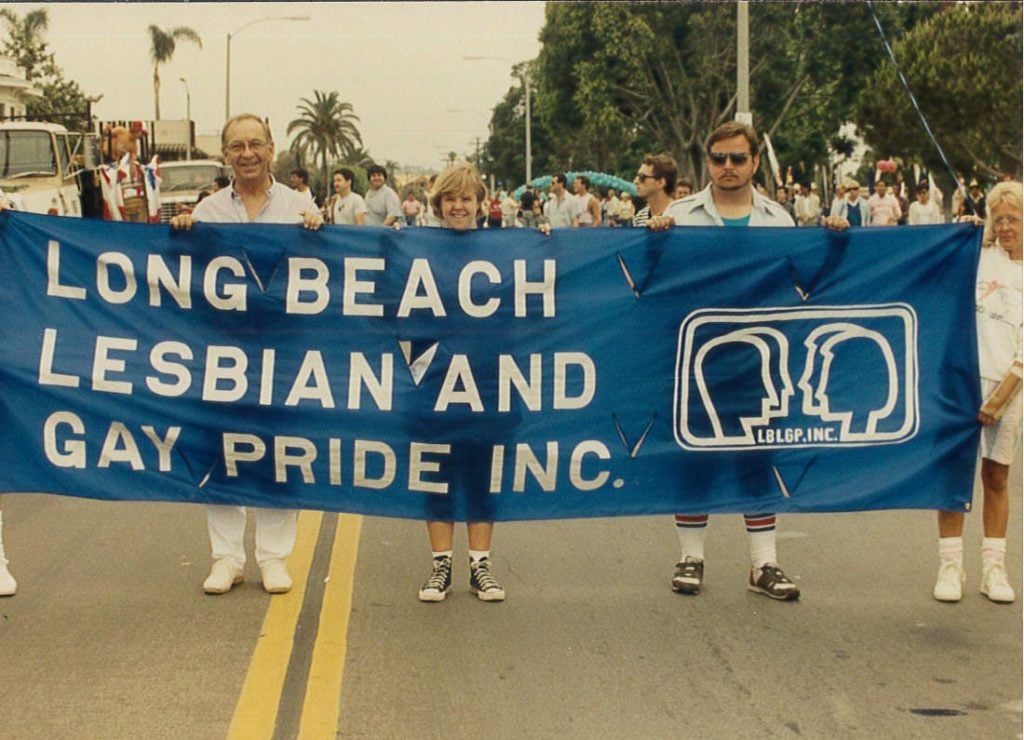LONG BEACH — Ever worn a bulletproof vest to a Long Beach Pride Parade? Judi Doyle did.
In the week leading up to the Long Beach Lesbian and Gay Pride Parade in 1985, Doyle, the Pride Board president, received a threatening message.
Long Beach Gay and Lesbian Pride , the nonprofit group in charge of the festival and parade, was launched in 1983. They organized the first parade along Ocean Boulevard in 1984, and very few people protested.
Long Beach Pride 2019: 50th anniversary of Stonewall Riots is festival, parade theme

Members of Long Beach Lesbian and Gay Pride march in a parade in the mid 1980s. Photo: Long Beach Lesbian and Gay Pride.
Marching in a bulletproof vest
When Doyle listened to answering machine at the Pride office, the caller indicated that Doyle would be shot if she walked the parade route.
“It was chilling and frightening,” Doyle, 74, told Q Voice News last year in an interview. “But they weren’t very articulate.”
After Doyle told the Long Beach Police Department about the message, they said she couldn’t march without a protective vest.
Doyle wore her bulletproof vest, but thankfully nobody shot at her; however, a few people tossed eggs at her fellow marchers, she said.
Long Beach Pride Festival history
The Long Beach gay and lesbian community founded the festival and parade in an effort to forge its own identity while living in the shadow of LA Pride, which was formed in 1970.
The first Long Beach Pride Parade was half an hour, 5,000 people attended the two-day festival. It took place at Palm Island, which was located at the southern end of Pine Avenue at what is Shoreline Drive.
The city made several efforts to prevent the parade from happening, but Pride officials put up a good fight.
By the way, the festival always has taken place the weekend before Memorial Day because the city didn’t want it held during the summer season, which begins with Memorial Day weekend.
Long Beach Pride 2019: Guide to parade, festival, road closures
City tries to block Pride Parade
In 1985, the city told parade organizers they must have $1 million in liability insurance; however, Pride officials received a court injunction and up on the parade without a permit.
When parade organizers discovered the city had waived or reduced the insurance requirement for other groups, Long Beach Pride, with the help of the ACLU, sued the city on the grounds of discrimination.
Parade organizers secured liability insurance in 1987 and subsequent years.
Long Beach Pride defeats city
In 1991, a Los Angeles Superior Court judge ruled that Long Beach’s ordinance requiring liability insurance on the basis of a parade’s subject matter was unconstitutional and violated the 1st Amendment. The city appealed the decision, but the California Court of Appeals upheld the lower court ruling.
After losing the the court battle, the city finally agreed to develop uniform requirements for all events.
